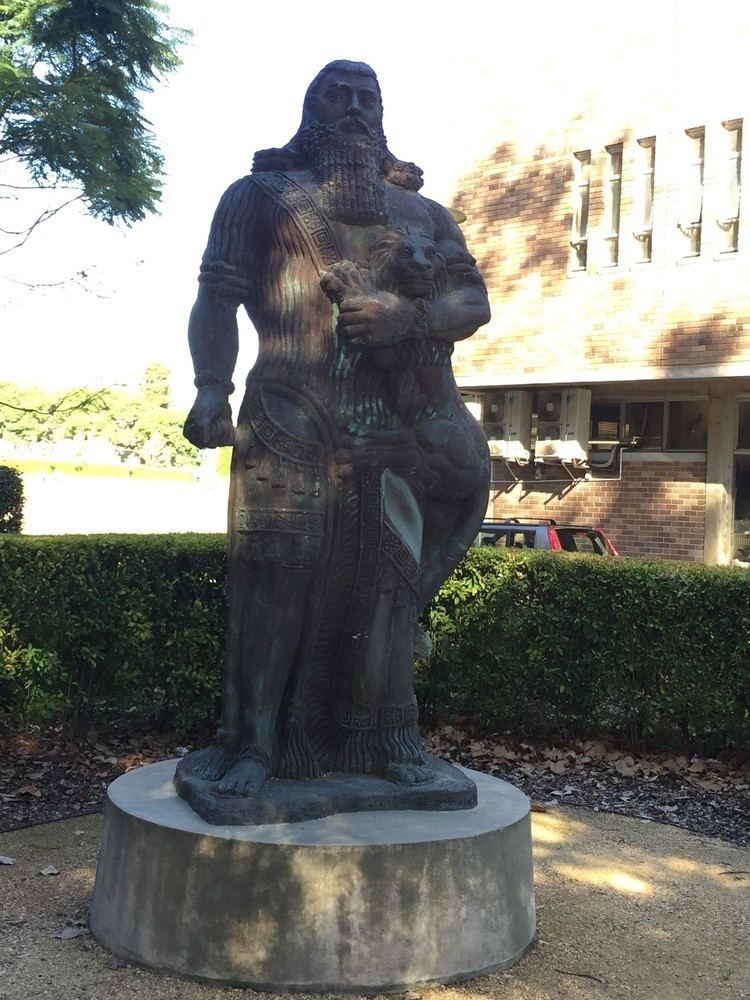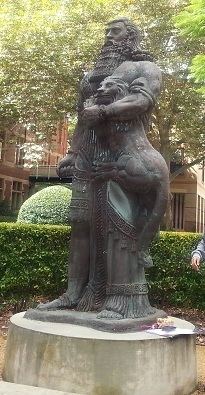 | ||
Similar Reserve Bank of Australia, Salt Pan Creek, Museum of Sydney, Rosehill Gardens Racecourse, Sydney Tramway Museum | ||
Gilgamesh, Ur, Nineveh at NIcholson Museum , Uni of Sydney
The Statue of Gilgamesh at the University of Sydney, Camperdown, was created by Lewis Batros on behalf of the Assyrian community, and unveiled in 2000. The 2.5m statue depicts the fictional eponymous character derived from ancient (c2150-1400 BC) Sumerian text, The Epic of Gilgamesh.
Contents
The Gilgamesh Cultural Centre, on behalf of the Assyrian community, presented the statue to the University to commemorate its sesquicentenary. The statue was unveiled by Dame Leonie Kramer, A.C., and D.B.E., on 15th Oct 2000. It is located in the Camperdown/Darlington Campus of the University of Sydney between the Old Teachers College Building and the Women's Sports Centre, facing towards the Charles Perkins Centre.
History

Gilgamesh was a king of Uruk, Mesopotamia. Gilgamesh is described to be a demigod of superhuman strength who built the city walls of Uruk to defend his people. Gilgamesh fought the demon Humbaba (or Huwawa), along with wild man Enkidu and brought his head back to Uruk on a raft. The pair also defeated the Bull of Heaven sent by the furious goddess Ishtar. These conquered beasts can be linked to the creature in the statue as a representation of Gilgamesh’s strength and power. Gilgamesh is seen as a worldly-wise, cultured king and protector who is at the centre of human society. The statue was erected to celebrate the might and power of Gilgamesh and commemorate his achievements as a protector and king.
Artist
The statue was sculpted by Lewis Batros, who is famous for a number of prominent works in several cities. He has done many Assyrian inspired works, some of which have been controversial upon unveiling including a 4.5m high monument for Assyrian victims of genocide commissioned by Fairfield council. He obtained a degree in fine art in 1986 and migrated to Australia in 1990. Many of Bartos’ works take inspiration from Assyrian heritage, stories, art and culture therefore his works are personal.
